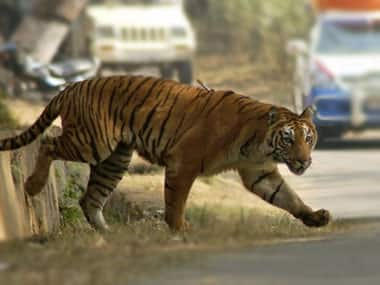New Delhi: The government today challenged claims by sections of wildlife experts that it had used a flawed methodology for its latest tiger census and instead asserted that their study was a “theoretical iteration” on old data whose precision is “questionable”. [caption id=“attachment_2130083” align=“alignleft” width=“380”]  Reuters[/caption] The National Tiger Conservation Authority (NTCA), a statutory body under the Environment Ministry today sent a clarification regarding the recent study led by Oxford University which found the Ministry’s methodology flawed and said that biologists themselves have used imprecise, low-quality data to question the tiger estimation methodology. The NTCA, which had in January estimated that India had 2,226 tigers, said the issues that a team of Indian wildlife scientists had raised has “no relevance to the 2014 tiger population and status estimation”. “Recently there have been some news reports in a section of media, based on the published study by Arjun Gopalaswamy and Ullas Karanth. The content of these published articles have no relevance in the context of 2014 tiger population and status estimation,” NTCA said in a clarification today. A team of scientists from University of Oxford, Indian Statistical Institute and Wildlife Conservation Society led by tiger conservation expert Ullas Karanth recently claimed to have exposed inherent shortcomings in the ‘index-calibration’ method which meant it could produce inaccurate results. Flaws in a method commonly used in censuses of tigers and other rare wildlife put the accuracy of such surveys in doubt, the researchers had said. “There is a remedy for poor data analysis but there is no remedy for poorly collected data; any insights that emerge from these is also likely to be seriously flawed and may mislead even well meaning scientists. We believe such is the case with the current paper by Karanth and colleagues. “The current study is basically a theoretical iteration on old data whose precision is questionable as it is based on artificial replications done by software rather than extensive search efforts in the field,” NTCA said. NTCA said the study published by Gopalaswamy is based on data of 2005 and 2011 and has deliberately ignored methods used in recent estimation which are currently most advanced and robust spatial models and address all concerns raised in recent publication in ‘Methods in Ecology and Evolution’. “The paper and media reports are contradicting themselves by not disputing the increase in tiger numbers in the first place, while questioning the methodology. “The reports are wrongly quoting an increase of tiger numbers by 49 per cent from 2006 to 2010 wherein the growth was 17 per cent,” NTCA said. It noted that the current method used for tiger estimation has been peer-reviewed by national as well as international experts and which has been published in an international scientific journal after a thorough peer-review. NTCA said the data sets used in the study by Gopalaswamy are based on “faulty design, are imprecise and of low reliability”. Elaborating on the technicalities, NTCA said the study by Karanth, uses a sample grid of 188 sq km with a maximum 40 km of single walk (transect) and minimum of 4 km. “In this single walk each km is used as a replicate. And only scat was collected leaving out other important ovariates, like human disturbance, prey and habitat,” it said. “As can be realized, search efforts were not extensive, thereby reducing detection probability and hence, reducing value of regression coefficient as a predictor,” it said. It said that the current exercise uses robust spatially explicit capture-recapture protocols for extrapolating, using joint models in areas where intensive monitoring was not possible due to constraints. NTCA maintained that the papers’ contention of having a high detection probability being unrealistic is also “flawed” as an area of more than 3 lakh square kilometers was intensively sampled using 9,735 cameras which yielded such a high number of individual tigers. “A sample grid of 100 sq km with 15 replicates of 5 km long transects were sampled for tiger signs like scat and pugmarks, along with 25 vegetation and human disturbance plots and 25 animal dung plots. “One camera is placed in every 1 to 4 sq kms which ensures better detectability thereby reducing imperfect detections as well as increasing the detection probability making the regression coefficient a better predictor. “Moreover, the current methodology is a refinement over the last two cycles of 2006 and 2010 and uses joint distribution models of covariates in a spatially explicit mark recapture model,” it said. “This study exposes fundamental statistical weaknesses in the sampling, calibration and extrapolations that are at the core of methodology used by the government to estimate India’s numbers, thus undermining their reliability,” Ullas Karanth, a co-author from the Wildlife Conservation Society, and a member of India’s National Tiger Conservation Authority had said in the study. PTI
The government today challenged claims by sections of wildlife experts that it had used a flawed methodology for its latest tiger census and instead asserted that their study was a “theoretical iteration” on old data whose precision is “questionable”.
Advertisement
End of Article
Written by FP Archives
see more


)

)
)
)
)
)
)
)
)



